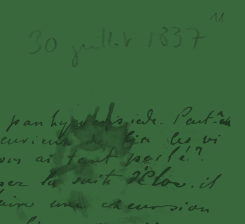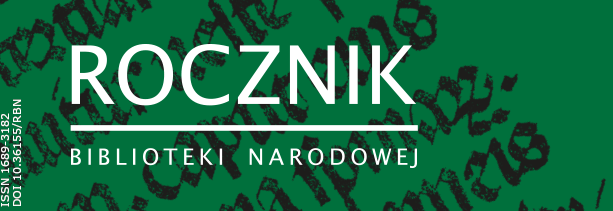NUMERY ARCHIWALNE

STRONA REDAKCYJNA, SPIS TREŚCI, s. 1–10 / CREDITS, TABLE OF CONTENTS, p. 1–10
STUDIA I MATERIAŁY / STUDIES AND MATERIALS
Książki i literatura w przedszkolach – początki socjalizacji do czytania, s. 11–62 / Books and literature in kindergartens: the beginnings of literary socialization, p. 11–62
The article is based on the analyzes of the results of the qualitative research carried out in public kindergartens in various socio-cultural environments. The aim of the study was to observe the institutional process of preparing children for the contact with reading culture. The article describes the presence of books and literature in preschoolers’ everyday life, and describes the methods and effects of building book collections in the surveyed kindergartens. The article answers the question raised in the study: is play, both spontaneous and arranged, integrated with literary socialization? The attitudes of preschool teachers towards children’s literature and good practices of reading initiation are also presented. Recommendations are formulated for cultural and educational policy aimed at preparing children to read books.
Katedra wileńska Władysława Zahorskiego – przyczynek do dziejów fotografii w Wilnie i jej roli w badaniach nad głównym kościołem miasta u progu XX wieku, s. 63–85 / The Vilnius Cathedral by Władysław Zahorski: a contribution to the history of photography in Vilnius and its role in research on the city’s main church at the turn of the 19th and 20th centuries, p. 63–85
The Vilnius Cathedral by Władysław Zahorski (1858–1927), published in 1904, was the first monograph of this church illustrated almost exclusively with photographs. In this article, the illustrative material contained in the aforementioned book is analyzed: the problem of the authorship of the photos (in the vast majority taken by the famous Vilnius photographer Stanisław Filibert Fleury), and the time and circumstances of their creation is discussed. Moreover, the role of photography in Zahorski’s academic activities and in research on the history of the cathedral at the beginning of the 20th century is characterized.
Rosyjskie biblioteki ludowe w guberni siedleckiej w świetle korespondencji urzędowej i raportów nauczycielskich (1887–1903), s. 87–110 / Russian popular libraries in the Siedlce governorate in the light of official correspondence and teachers’ reports (1887–1903), p. 87–110
After the suppression of the Uniate diocese of Kholm / Chełm in 1875, the educational authorities of the Kingdom of Poland set themselves the goal of the Orthodox confessionalization and dissemination of Russian national identity among the peasants from the eastern part of the Suwałki, Lublin and Siedlce governorates. The forced conversion aroused growing resistance among the former Uniates, which outraged the Russian state authorities. Consequently they proposed to disseminate Russian elementary education, and to develop a network of popular libraries. These libraries, unlike those in central Russia, were to be financed from the national budget and targeted at a mass audience. Their particular task was to explain new readers which book was supposed to be ‘right’ or ‘wrong’, and to show them, what the ‘correct’ interpretation of individual works should be. To attract both literate and illiterate people, they used visual means – for example magic lanterns (lanterna magica), or outdoor reading campaigns. Therefore, these libraries were to become local cultural centres ‘defending’ local residents against Polish and Catholic books, treated as a deadly threat to the ‘primordial’ Russianness of the Kholm Rus’.
Podstawy tworzenia słownictwa języków informacyjno-wyszukiwawczych o notacji paranaturalnej, s. 111–134 / Basics of creating the vocabulary of information-search languages with paranatural notation, p. 111–134
The implementation of a modern information and search language (jiw) in the National Library of Poland, resulting from the transformation of pre-coordinated languages, allows for the presentation of problems related to the functioning of library tools in the network environment. They concern, inter alia, the issue of reconciling the needs of local users of the library catalogue and the need to ensure compatibility with other online tools.
The National Library of Poland Descriptors Language (DBN) and the KABA Subject Entry Language differ from each other in terms of syntax and time of creation, but they work in the same library reality. Two issues are discussed – and illustrated with examples of DBN and JHP KABA vocabulary – allowing to outline the basics of creating a vocabulary and choosing a term as the lexical unit jiw.
Katalogowanie przedmiotowe publikacji z zakresu historii z wykorzystaniem Deskryptorów Biblioteki Narodowej, s. 135–172 / Subject cataloguing of historical publications with the use of the National Library of Poland Descriptor, p. 135–172
In recent years, the introduction of changes in the methodology of cataloguing historical publications at the National Library of Poland is related to the transition from the Subject Headings Language of the National Library of Poland (JHP BN) to the National Library of Poland Descriptors (DBN).
The first part of the article discusses the different types of descriptors that are commonly used in the cataloguing of history publications. Not only does it indicate the types of descriptors that are more precisely related to the topic and content of the work which are introduced into the fields 600–651 and 658 of a bibliographic record, but also descriptors of the form / type / genre, which are placed in fields 380 and 655 (and sometimes also 650) of the mentioned the bibliographic record of a given publication.
The second part of the article is devoted to the methodology of creating subject descriptors, which are part of a permanently built and expanded history thesaurus (part of the DBN database). Attention is paid to the functions of the librarian taking care of subject cataloguing, which are related to the creation of new subject descriptors and the development of the thesaurus from history. The importance of using appropriate data sources was emphasized.
The third part presents specific examples of subject descriptions of various types of historical publications, that is, items that were catalogued with the use of the National Library Descriptors. Mainly subject descriptions created for various types of scientific books in the field of history are presented, and contemporary publications of historical sources are also included.
Zmiany w klasyfikacji Polskiej Bibliografii Bibliologicznej, s. 173–196 / Changes in the classification of Polish Bibliological Bibliography, p. 173–196
In January 2016, work began on the development of the Polish Bibliological Bibliography (PBB). The most important goal of the first stage was to update the thematic scope of the bibliography in the context of other fields and scientific disciplines. Then, in accordance with the adopted assumptions, described in the article New classification of Polish Bibliography, in the Rocznik Biblioteki Narodowej, 2016, vol. 47, pp. 171–210, three yearbooks of PBB were included: 2011–2013. In each of them, further modifications were made, including changes to the classification scheme. In the 2014 PBB yearbook, they were so significant that the new layout of the content needed to be re-discussed.
RECENZJE I SPRAWOZDANIA / REVIEWS AND REPORTS
Uniwersalna Klasyfikacja Dziesiętna w Bibliotece Narodowej 2018–2021, s. 199–208 / Universal Decimal Classification at the National Library of Poland 2018–2021, p. 199–208
Funkcjonowanie bibliotek w Polsce w czasie epidemii COVID-19. Rekomendacje, działania i pomoc Biblioteki Narodowej – raport, s. 209–231 / The functioning of libraries in Poland during the COVID-19 pandemic. Recommendations, actions and help from the National Library of Poland: a report, p. 209–231

